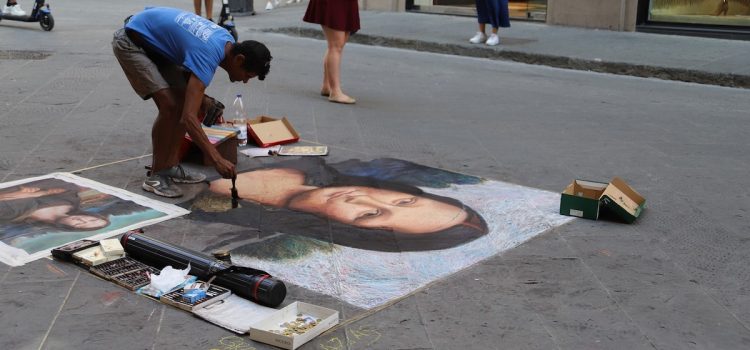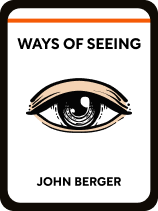

This article is an excerpt from the Shortform book guide to "Ways of Seeing" by John Berger. Shortform has the world's best summaries and analyses of books you should be reading.
Like this article? Sign up for a free trial here .
What are the implications of reproducing original works of art? How does reproduction alter the art’s original meaning?
For several hundred years, fine works of art were segregated from the working class, to be enjoyed and understood only by the wealthy elite. Now, for the first time in history, art is widely accessible thanks to its reproduction. But reproducing original works of art distorts their meaning.
Here’s how the reproduction of art changes its meaning.
The Reproduction of Art
In his book Ways of Seeing, art critic John Berger lists all of the different ways someone can change the meaning of a work of art (intentionally or unintentionally) simply through the act of reproducing it.
| Walter Benjamin’s “The Work of Art in the Era of Mechanical Reproduction” Berger notes that his discussion in this section draws heavily on philosopher Walter Benjamin’s essay “The Work of Art in the Era of Mechanical Reproduction.” Benjamin argued that the reproduction of art devalues what he calls its “aura,” or its special, noble, meaning-giving power, which is present in the original work. Without the connection to its physical place or the special moment-in-time quality of art that makes it timeless, art is open to political co-option. |
Reproduction Removes the Art From Its Intended Home
Reproduction allows people from all over the world, from all backgrounds, to view paintings that they might otherwise never see. The vast majority of the world’s population hasn’t been to the Louvre in Paris, yet nearly everyone is familiar with the Mona Lisa, which resides there. In many ways, Berger says, this is a wonderful thing. It allows people from all economic situations to access art equally—in theory, that is.
The reality, Berger points out, is that the original meaning of a painting is distorted each time it’s viewed in a new location. Imagine that you’re viewing a painting of Jesus Christ on a crucifix. You’re standing in front of the original painting in a beautiful cathedral, surrounded by hushed whispers, ornate stained glass, and soaring ceilings. Now imagine you are looking at a replica of that same painting, and it’s hanging on the wall of your grandmother’s living room. It’s reasonable to assume that your reaction (and your interpretation of the work) would differ between the two experiences.
Before reproduction was available, Berger points out that paintings were usually commissioned with the location already in mind. The artist knew the setting in which the painting would be displayed, and he would use the information accordingly. The original intention of the artist is lost when a work of art is reproduced and displaced.
| Smartphones and Place-Based Art In 1600, you could only see a particular painting if you and that painting were in the same room. While that’s not exactly true for music, because different musicians could play the same song for different audiences, music was still singular in the sense that there was no way for you to hear a particular performance unless you were there while it was happening. The camera and recorded music made it possible for exponentially more people to see reproductions and hear recordings in exponentially more settings. The smartphone has done the same to an even greater degree. While smartphones are undoubtedly a way art and music are divorced from place, some artists are using smartphones to create intentional place-based work. Using GPS, a Washington D.C. band created an album that you can only hear if you’re at the National Mall, listening on your phone. If you walk too far away from the Mall, the album won’t play. |
Reproduction Breaks the Whole Into Parts
Before reproduction, paintings were only ever viewed and analyzed in their entirety. Even today, when you look at an original painting, your eye is likely to wander from one area to another; however, the entire work is in front of you—available for you to consider before deciding upon your interpretation.
After reproduction, paintings could be interpreted based on individual sections. Today, we interpret reproduced images in isolated sections all the time. Why the amputation? Why would someone display part of a painting rather than the whole thing? Berger explains the motivation: When a person has the freedom to pick and choose which sections of a painting to display, they gain control over the message that it sends.
A situation that occurs less often, but can be just as manipulative, is when paintings are displayed in video. The camera moves from one zoomed-in portion of the painting to another until the whole painting has been shown. While on the surface this might seem the same as looking at the painting yourself, it isn’t. The choices that the cameraman makes, such as how long to linger over an image, or which order to display the images in, tells a story. He is in control of the narrative, not you.
In both of these cases, the viewer’s interpretation of the work is manipulated. As we’ll discuss in the next chapter, advertisers use this segmentation method frequently and skillfully—it’s a modern mystification of centuries-old art that supports capitalistic interests. As always, Berger encourages you to retain a skeptical eye and always ask yourself, “Who chose to display this image to me, and why?”
| Cropping, Ethics, and the Media Modern technology has made cropping photos easy and instant. Nearly every smartphone has a photo editing feature where you can separate an image into parts in the blink of an eye. It’s considered unethical for journalists to crop a photo if it’s going to change the meaning of the photo, but some news outlets engage in this behavior anyway. In this thread, members of the public share examples of when the media has manipulated images to fit their narrative. One example of cropping shows former Vice President Pence and his wife walking at a nearly empty political rally. There are a few others walking alongside them, but the stands are empty. The next image shows the stands cropped out of the photo, which leaves the couple appearing to be in a crowd of people. |
Reproduction Allows Proximity to Alter Meaning
Reproduction of an image allows people to place words or other images beside it, and proximity alone, Berger says, can alter the meaning of an image.
Proximity to Words
The content of the words placed beneath or beside an image isn’t as important as the way it changes how we interpret the image. Berger notes that when a piece of art stands alone, the viewer takes it in (along with the setting, as we discussed earlier in this chapter) and draws meaning. When words are present, however, that creative process is halted. Instead, the image becomes an illustration of the words.
For example, observe this painting by Titian with no context. Spend a few moments and try to make rudimentary sense of it:
Now, imagine that you saw this image reproduced in a magazine with the following words beneath it. Then study the image a second time.
Bacchus fights for his love, Ariadne, sacrificing human and animal lives in exchange for her devotion.
If you read the words before coming to your own understanding, your eyes will immediately search for visual information that supports the written meaning. (Shortform note: This caption was fabricated by us to illustrate Berger’s point. The image is titled: Bacchus and Ariadne by Titian 1520-1523.)
Shortform Commentary: Memes and the Power of Words
A modern-day example of words changing the meaning of an image can be found in memes. A meme is a digital image that is copied over and over with slight variations and passed along, usually for the sake of humor. Observe the “Disaster Girl” meme as an example of words changing the meaning of an image:
Proximity to Another Image
Just as words can alter the meaning of an image, two images placed side by side can have the same effect. Berger argues that what is seen immediately after an image, when there is no chance for digestion, changes its meaning. (Shortform note: This is another strategy often used by the media to convey a particular message. For example, a newspaper might print a photo of a protest directly next to a photo of a politician. This doesn’t mean the protest is about him, but that’s the meaning derived by their proximity.)
Using the Titian painting from the previous section, notice how the meaning of the painting shifts when it’s placed beside these two different contexts:
Reproduction Changes How We Value the Original Piece
Once works of art were able to be easily reproduced and disseminated, the images lost inherent value. They were too easy to come by. There was and still is, however, a great desire to see original works of art. Seeing a reproduction of Vermeer’s Girl with a Pearl Earring isn’t particularly exciting, but most art lovers would be elated to stand before the original painting (currently located at Mauritshuis museum in the Netherlands). The interesting part is why…
According to Berger, the value of an original painting is now almost entirely due to its authenticity. That is, it’s valuable because it’s the original—not because it was a particularly skillful work, or because its meaning is profound. We stand in awe not because it was painted by our favorite artist, but because, “There’s the real one!”
Berger laments that modern visitors to museums often miss the point of the art entirely, and attend simply to be able to say they were in the presence of the Mona Lisa. Once again, he urges us to change our way of seeing.
| Mona Lisa Voted Most Disappointing Tourist Attraction In a 2019 poll, 2,000 Britons were asked what the most disappointing tourist attraction is. A whopping 86% of them chose the Mona Lisa. Often, a painting’s notoriety in itself creates an expectation of amazement or enlightenment. Museum-goers expect to step in front of a master work and gasp at the profound beauty. However, this is a recipe for disappointment. As Berger says, the value of paintings now largely rests in being an original, but this is a vacuous motivation for wanting to view a work of art. |

———End of Preview———
Like what you just read? Read the rest of the world's best book summary and analysis of John Berger's "Ways of Seeing" at Shortform .
Here's what you'll find in our full Ways of Seeing summary :
- Why we don't need experts to "translate" works of art for us
- How the dominant class uses art and art criticism to “mystify” the working class
- How our experiences and beliefs influence what we see






